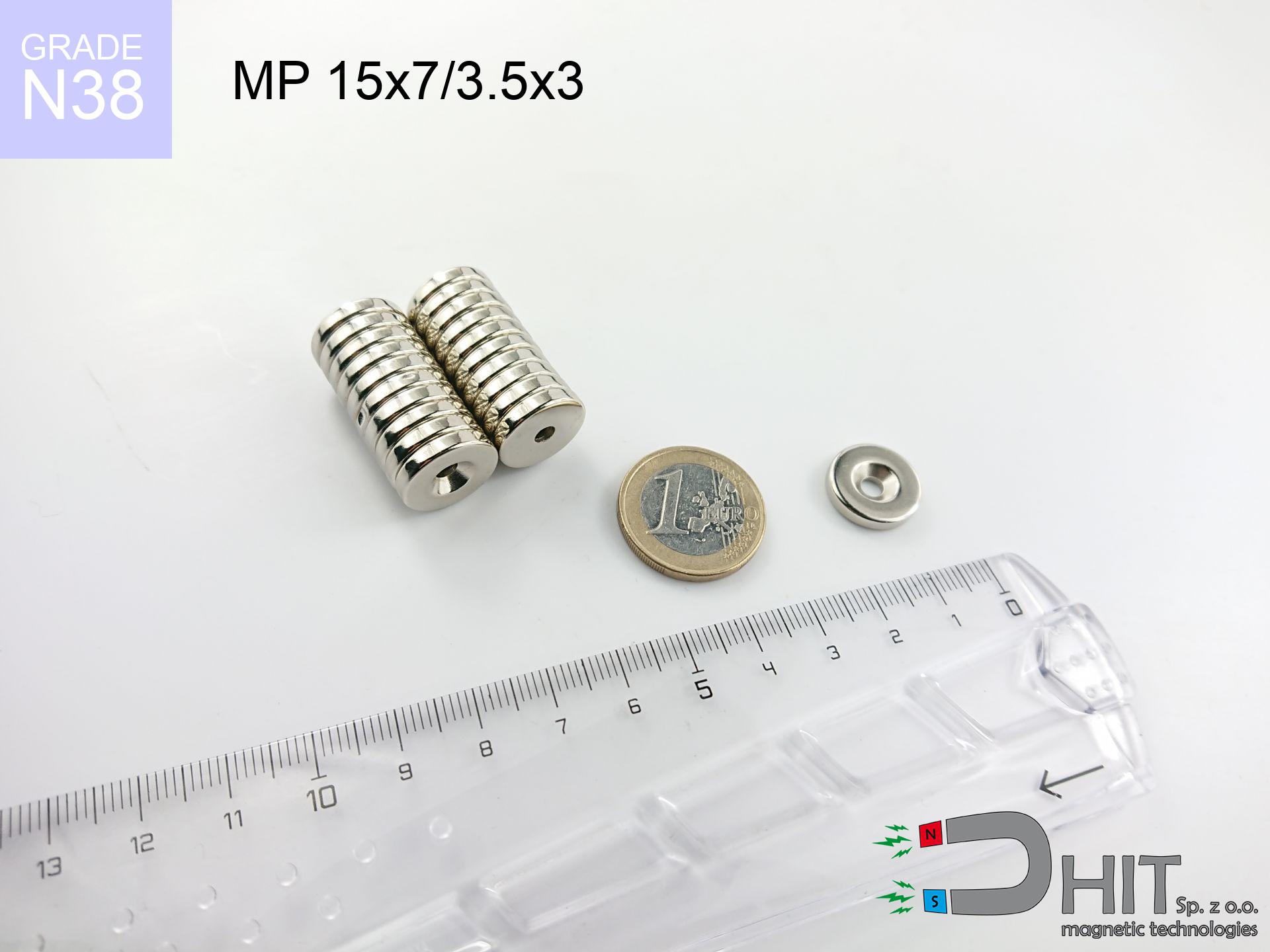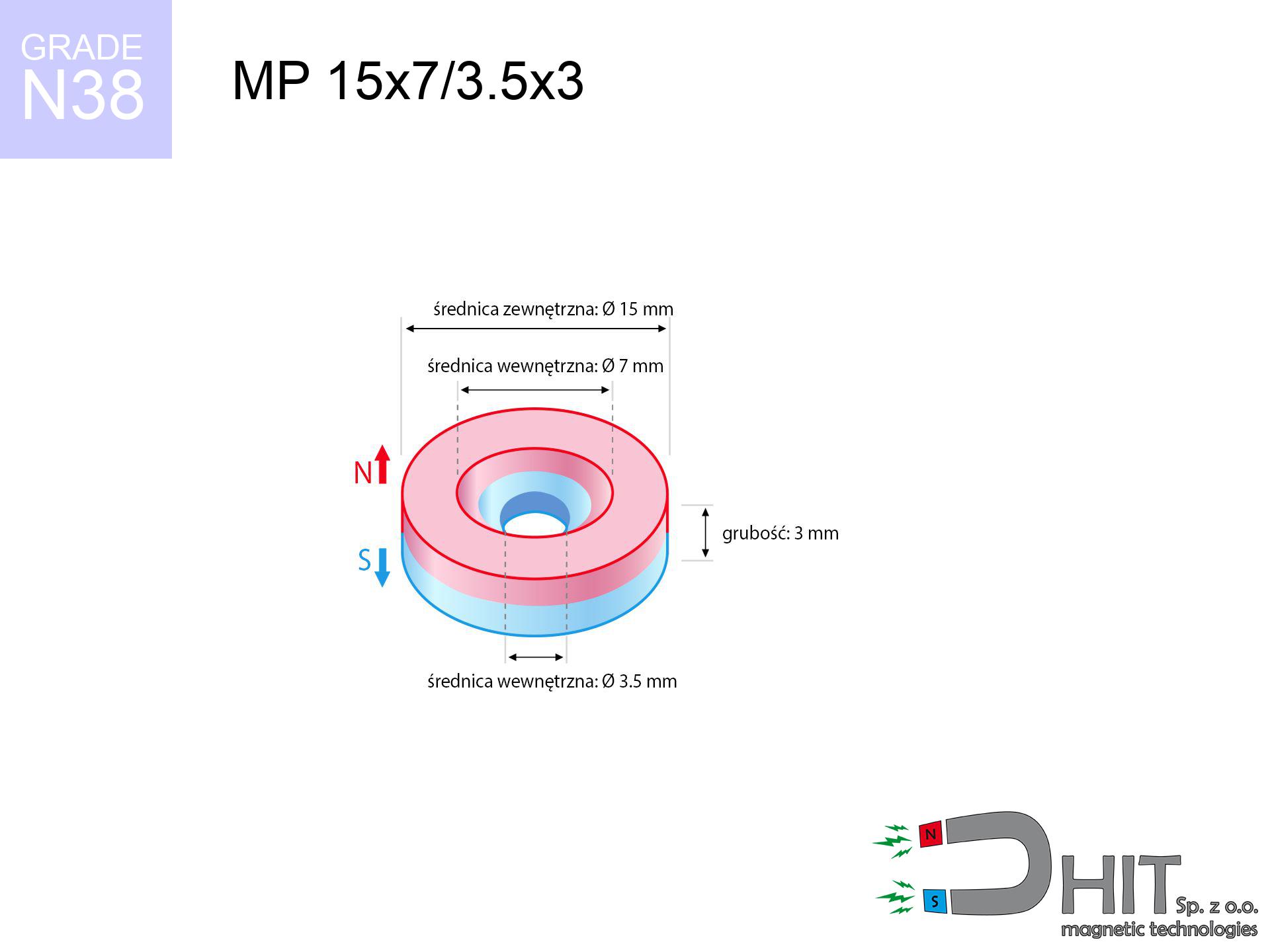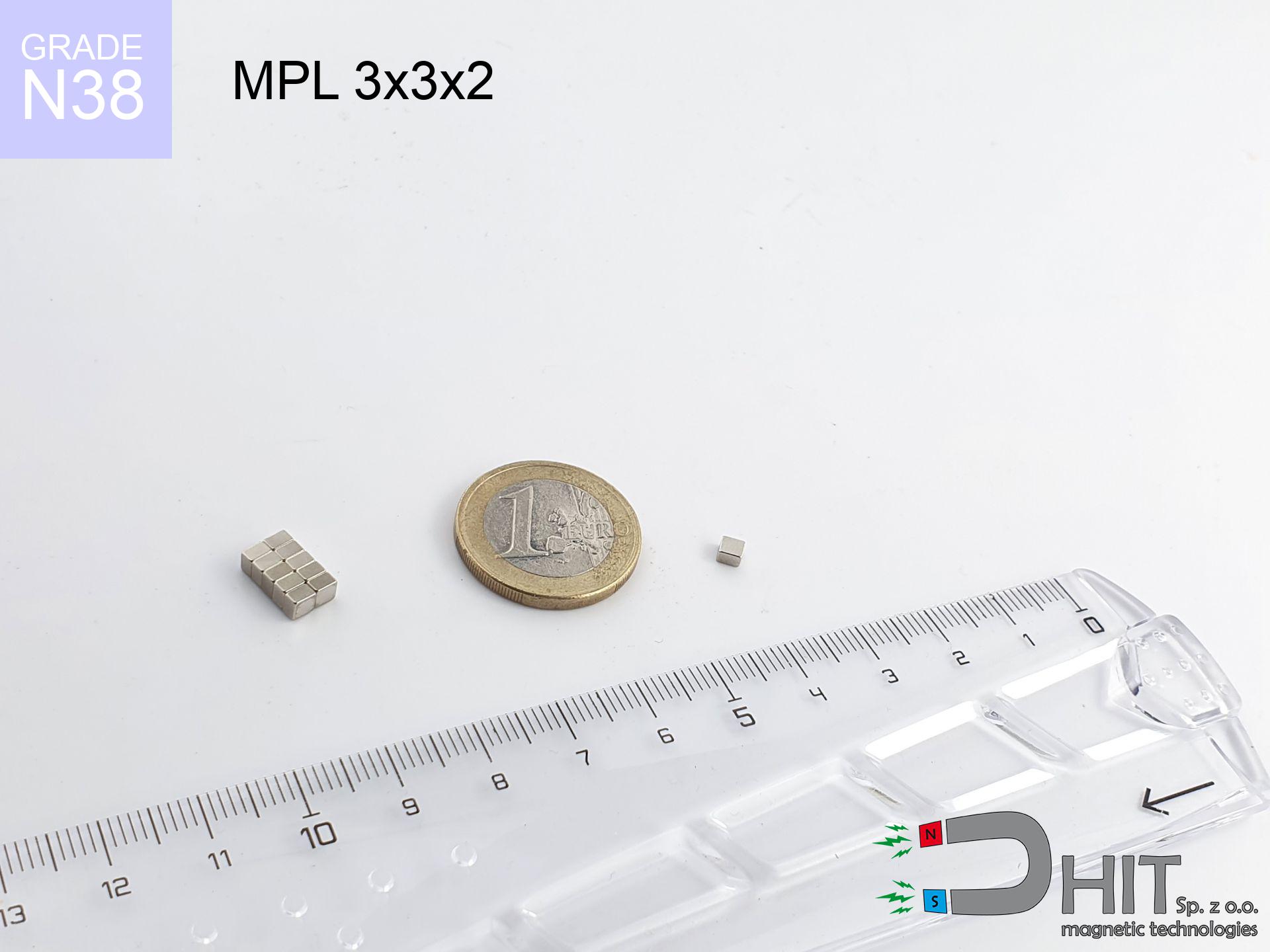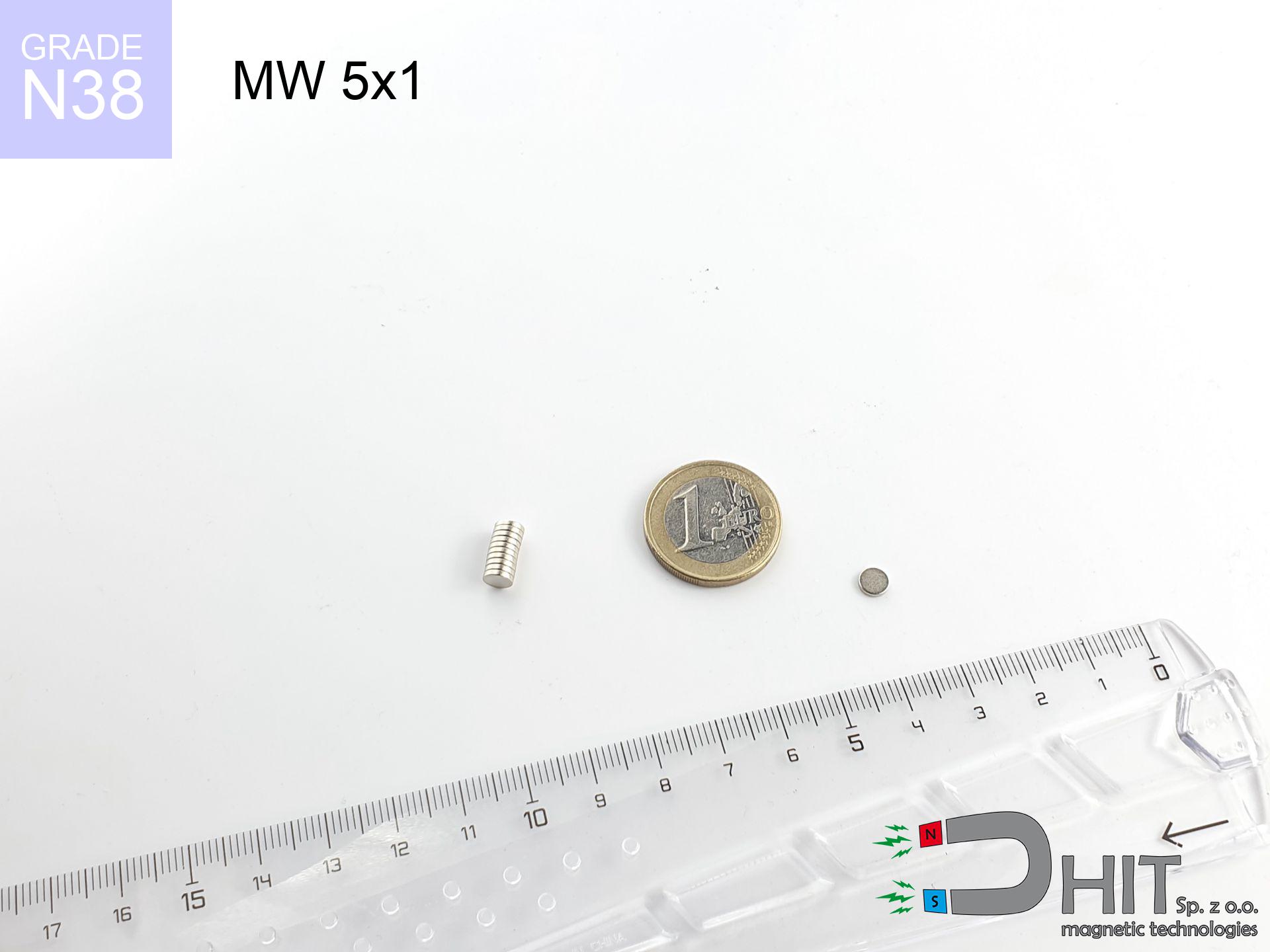MP 15x7/3.5x3 / N38 - neodymium magnet
ring magnet
catalog number 030182
GTIN: 5906301811992
external diameter Ø
15
mm [±0,1 mm]
internal diameter Ø
7/3.5
mm [±0,1 mm]
height
3
mm [±0,1 mm]
magnetizing direction
↑ axial
capacity ~
0.90 kg / 8.83 N
magnetic induction ~
303.47 mT / 3,035 Gs
max. temperature
≤ 80
°C
catalog number 030182
GTIN: 5906301811992
external diameter Ø
15 mm [±0,1 mm]
internal diameter Ø
7/3.5 mm [±0,1 mm]
height
3 mm [±0,1 mm]
magnetizing direction
↑ axial
capacity ~
0.90 kg / 8.83 N
magnetic induction ~
303.47 mT / 3,035 Gs
max. temperature
≤ 80 °C
1.14 ZŁ gross price (including VAT) / pcs +
0.93 ZŁ net price + 23% VAT / pcs
bulk discounts:
need more quantity?Want to bargain?
Call us tel: +48 22 499 98 98 or write through contact form on our website. You can check the mass as well as the shape of neodymium magnets in our power calculator magnetic mass calculator
Orders placed by 2:00 PM will be shipped on the same business day.
Specification: ring magnet 15x7/3.5x3 / N38 ↑ axial
Magnetic properties of the material N38
Physical properties of sintered neodymium magnets Nd2Fe14B
List recommended items
Advantages as well as disadvantages of neodymium magnets NdFeB.
Apart from immense power, neodymium magnets have the following advantages:
- They do not lose their strength (of the magnet). After approximately 10 years, their strength decreases by only ~1% (theoretically),
- They are highly resistant to demagnetization by external magnetic field,
- In other words, thanks to the glossy nickel, gold, or silver finish, the element gains an visually attractive appearance,
- They have very high magnetic induction on the surface of the magnet,
- By using an appropriate combination of materials, they can achieve high thermal resistance, allowing them to operate at temperatures up to 230°C and above...
- Due to the option of accurate forming and adaptation to individual needs – neodymium magnets can be produced in a wide range of shapes and sizes, which enhances their versatility in applications.
- Key role in advanced technologically fields – are utilized in HDD drives, electric motors, medical equipment and various technologically advanced devices.
Disadvantages of neodymium magnets:
- They can break as they are extremely fragile when subjected to a powerful impact. If the magnets are exposed to impacts, we recommend using magnets in a metal holder. The steel housing in the form of a holder protects the magnet from impacts and simultaneously increases its overall strength,
- Magnets lose their power due to exposure to high temperatures. In most cases, when the temperature exceeds 80°C, these magnets experience permanent reduction in strength (although it is worth noting that this is dependent on the shape and size of the magnet). To avoid this problem, we offer special magnets marked with the [AH] symbol, which exhibit high temperature resistance. They can operate even at temperatures as high as 230°C or more,
- They rust in a humid environment. For outdoor use, we recommend using waterproof magnets, such as those made of rubber or plastic,
- The use of a cover - a magnetic holder is recommended due to the limited production capabilities of creating threads or complex shapes in the magnet
- Possible danger to health from tiny fragments of magnets pose a threat, when accidentally ingested, which is particularly important in the context of child safety. Furthermore, tiny parts of these devices can be problematic in medical diagnosis after entering the body.
Precautions with Neodymium Magnets
Keep neodymium magnets away from people with pacemakers.
Neodymium magnets generate strong magnetic fields. As a result, they interfere with the operation of a pacemaker. This is because many of these devices are equipped with a function that deactivates the device in a magnetic field.
Make sure not to bring neodymium magnets close to the TV, wallet, and computer HDD.
Magnetic fields generated by neodymium magnets can damage magnetic storage media such as floppy disks, credit cards, magnetic ID cards, cassette tapes, video tapes, or other similar devices. In addition, they can damage televisions, VCRs, computer monitors, and CRT displays. You should especially avoid placing neodymium magnets near electronic devices.
Neodymium magnets can demagnetize at high temperatures.
Although magnets have shown to retain their effectiveness up to 80°C or 175°F, this temperature may vary depending on the type of material, shape, and intended use of the magnet.
The magnet coating is made of nickel, so be cautious if you have an allergy.
Studies clearly indicate a small percentage of people who suffer from metal allergies such as nickel. An allergic reaction often manifests as skin redness and rash. If you have a nickel allergy, try wearing gloves or avoid direct contact with nickel-plated neodymium magnets.
It is important to keep neodymium magnets out of reach from youngest children.
Remember that neodymium magnets are not toys. Do not allow children to play with them. In the case of swallowing multiple magnets simultaneously, they can attract to each other through the intestinal walls. In the worst case scenario, this can lead to death.
Dust and powder from neodymium magnets are highly flammable.
Do not attempt to drill into neodymium magnets. Mechanical processing is also not recommended. Once crushed into fine powder or dust, this material becomes highly flammable.
It is crucial not to allow the magnets to pinch together uncontrollably or place your fingers in their path as they attract to each other.
Magnets may crack or alternatively crumble with uncontrolled joining to each other. Remember not to approach them to each other or hold them firmly in hands at a distance less than 10 cm.
Neodymium magnets are the most powerful, most remarkable magnets on earth, and the surprising force between them can shock you at first.
Familiarize yourself with our information to properly handle these magnets and avoid significant injuries to your body and prevent damage to the magnets.
Avoid bringing neodymium magnets close to a phone or GPS.
Neodymium magnets generate intense magnetic fields that interfere with magnetometers and compasses used in navigation, as well as internal compasses of smartphones and GPS devices.
Neodymium magnets are extremely fragile, resulting in shattering.
Neodymium magnets are characterized by considerable fragility. Neodymium magnetic are made of metal and coated with a shiny nickel, but they are not as durable as steel. In the event of a collision between two magnets, there may be a scattering of fragments in different directions. Protecting your eyes is crucial in such a situation.
To show why neodymium magnets are so dangerous, see the article - How dangerous are powerful neodymium magnets?.




![badge holder 40x12x7 [CA] badge holder 40x12x7 [CA]](https://cdn3.dhit.pl/graphics/products/ui40x12x7-vop.jpg)

![magnetic separator 25x400 [2xM8] / N52 magnetic separator 25x400 [2xM8] / N52](https://cdn3.dhit.pl/graphics/products/sm-25x400-2xm8-hoj.jpg)

